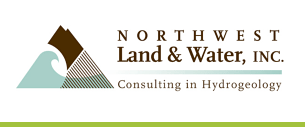NLW offers specialized analytical capabilities to support water-resource development, management, and protection.
Conceptual Model Development
NLW uses a variety of tools to develop conceptual hydrogeologic models. One such tool, the software application Viewlog, allows us to develop 3D models using well data stored in an Access database. We use Viewlog not only to facilitate hydrostratigraphic analyses but also to display subsurface information for clients. Viewlog also lets us generate digital surfaces that are easily converted into GIS layers and imported into numerical flow models for quantitative analyses.
Geochemistry & Isotope Analysis
NLW has expertise in the analysis and interpretation of standard aqueous and isotope geochemical data, which provides information about the source, location, and date of groundwater recharge. This information allows us to refine the conceptual hydrogeologic models that describe flow and reveals how aquifers are connected to each other and to surface water. It is useful for developing sustainable groundwater supplies, especially in areas where water resources are limited.
Hydraulic Continuity Analysis
Understanding hydraulic continuity is often critical to developing and managing water supplies. In areas where streams and aquifers are hydraulically connected, pumping may reduce flows, impacting habitat for fish and other aquatic species. NLW has extensive experience characterizing hydraulic continuity to identify potential stream impacts and develop mitigation strategies. We typically begin by building a conceptual model, sometimes collecting additional testing and monitoring data in the field to fill gaps. We have found that these models allow stakeholders to share a common understanding of conditions in the project area. Moreover, they provide a foundation for analytical or numerical modeling, which can be used to quantify stream impacts under various management scenarios.
Numerical Groundwater Modeling
NLW has developed numerical models and used existing USGS models to examine the hydrologic impacts of proposed groundwater withdrawals. Typical model applications include quantifying streamflow reductions related to pumping and developing mitigation strategies that minimize these impacts and permits sustainable water development to proceed. Our models often provide the technical basis for agreements between diverse stakeholders who have interests in limited water resources.
Seawater Intrusion Analysis
In western Washington, water purveyors must often pump groundwater from aquifers along marine shorelines, creating the potential for seawater intrusion (SWI). Many islands in Puget Sound have particularly vulnerable aquifers. NLW has worked closely with a variety of clients — from large municipalities to small private landowners — to understand the conditions that may lead to SWI. This work generally involves developing a conceptual hydrogeologic model. Once we understand the system and potential SWI risks, we may develop a plan for monitoring groundwater levels to ensure that seawater stays at a minimum distance from the shoreline. Our recommendations for minimizing the risk of SWI may include various measures — constraints on the water level in the pumping well, conservation, rainwater harvesting, and desalinization.

